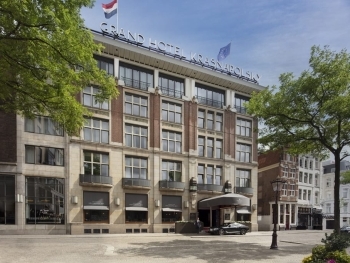A Quartet of Legends
Vienna is home to several iconic hotels, with the Grand Hotel standing proudly among the illustrious Hotels Sacher, Bristol, and Imperial. These establishments represent the pinnacle of hospitality in the city. Our detailed historical account of the Grand Hotel unveils a rich tapestry of a bygone era that continues to captivate the imagination.
Origins and Early Glory
In 1870, visionary Viennese hotelier Anton Schneider unveiled the Grand Hotel on the prestigious Ringstrasse, revolutionizing international hotel standards. This establishment quickly became a favored gathering spot for nobility, aristocrats, influential businessmen, and diplomats. During the 1873 World Exposition, the King of Belgium chose the Grand Hotel as his residence, cementing its reputation among European royalty. Renowned artists also found a home here; Johann Strauss celebrated his stage jubilee in the grand ballroom, and the tragic love affair between Crown Prince Rudolf and Mary Vetsera unfolded within the suite of Countess Larisch.
The hotel has hosted an array of distinguished guests over the years, including composers Pietro Mascagni and Wilhelm Furtwängler, actors Yul Brynner and Deborah Kerr, and the legendary trio of tenors – José Carreras, Luciano Pavarotti, and Plácido Domingo.
Historical Significance and Transformation
As the oldest of Vienna's remaining five-star luxury hotels, the Grand Hotel holds immense historical significance. Although it ceased operations as a hotel between 1958 and 1994, its historic facade remained intact. The narrative of the Grand Hotel is enriched by its periods of transformation: from its grand opening in 1870 to its closure in 1958, and its spectacular rebirth in 1994. Originally conceived as the first purpose-built hotel on the Ringstrasse and the first to be designated a "Grand Hotel" on the European continent, it set a trend that many other hotels would later follow.
Architectural Masterpiece
Designed by celebrated architect Karl Tietz, the Grand Hotel epitomizes the charm and elegance of the "K & K" (Imperial and Royal) Monarchy. Built in the 1860s, it features a style that is synonymous with the grandeur of the Ringstrasse. The hotel's prime location, in close proximity to the Musikverein, the Wiener Konzerthaus, and the Vienna State Opera, added to its allure.
Luxurious Amenities and Royal Patronage
Inaugurated on May 10, 1870, the Grand Hotel could accommodate up to 500 guests and boasted 200 bathrooms, a steam elevator, and soon after, telephones in each room. A beauty salon on the ground floor catered to both ladies and gentlemen. The hotel's restaurant was renowned for its culinary excellence, attracting royalty from across Europe who often left part of their luggage at the hotel for future visits. The grand banquet rooms hosted numerous significant events, including Johann Strauss's 50th anniversary celebration as an artist in 1894.
A Hub for International Agencies and Artists
Beyond its role as a social and cultural hub, the Grand Hotel also served practical purposes. In the 1950s, it provided quarters for the International Atomic Energy Agency (IAEA). After the IAEA relocated in 1979, the building housed offices for the Austrian National Bank and the Bundesbaudirektion.
Renovation and Modern Era
Beginning in 1989, the Grand Hotel underwent a significant renovation under the ownership of Japan's largest air carrier, All Nippon Airways Co., Ltd. (ANA). While the historical facade was preserved, the interior was completely redesigned to blend tradition with state-of-the-art technology. Exquisite fabrics and rare antiques were incorporated to enhance the hotel's unique splendor.
On August 1, 2002, JJW Hotels & Resorts acquired the hotel, restoring its original name, "Grand Hotel Wien." Today, it continues to be a beacon of luxury and historical significance, offering guests a unique blend of Viennese tradition and modern comfort.
The Grand Hotel remains a testament to Vienna's rich cultural heritage and its enduring appeal as a destination for the world's elite. Its storied past, illustrious guests, and ongoing commitment to excellence ensure that it will remain a symbol of luxury and elegance for generations to come.

